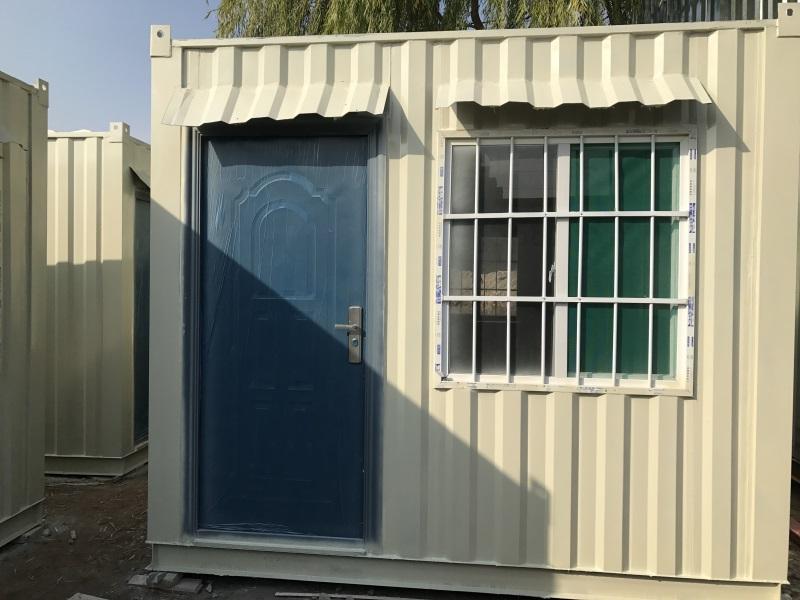- 地址:
- 济南市市中区经十西路
- 邮箱:
- 249058066@qq.com
- 电话:
- 18765894567
- 传真:
- 18765894567
一、集装箱钢材表面处理的一般要求是:
1、 The general requirements for surface treatment of container steel are:
喷砂清洁度等级为 Sa2 12 。
The cleanliness level of sandblasting is Sa2 12.
表面灰尘等级不高于3。
The surface dust level shall not exceed 3.
表面粗糙度为 Rz25~5Oμm。
The surface roughness is Rz25-5O μ M.
二、集装箱的表面处理工艺
2、 Surface Treatment Technology of Ganzhou Container
根据集装箱生产过程的特征,集装箱钢材表面采用车间预涂工艺,在钢板成型、拼装前进行自动抛丸处理,然后涂装 10μm 左右的车间底漆。完成钢板成型、部装和总装之后,进行二次喷砂处理,然后进入集装箱整箱喷漆工序。
According to the characteristics of the container production process, the surface of the container steel is pre coated in the workshop, and automatic shot blasting treatment is carried out before the steel plate is formed and assembled, and then coated with 10% μ Approximately m workshop primer. After completing the steel plate forming, partial assembly, and final assembly, a second sandblasting treatment is carried out, and then the entire container painting process is carried out.
原材料检验
Raw material inspection
对原材料的原始状况进行检验,查看是否有铁锈、氧化皮及其它污染物。原材料锈蚀等级按 ISO 8501-1,分为 A、B、C、D 四个等级,C、D 级钢材不宜使用。如果钢材严重锈蚀或残留大量的顽固附着物,则应报废。
Inspect the original condition of the raw materials to check for rust, scale, and other contaminants. The corrosion grade of raw materials is divided into four grades according to ISO 8501-1: A, B, C, and D. Grade C and D steel are not suitable for use. If the steel is severely corroded or has a large amount of stubborn attachments, it should be scrapped.
除油
Degreasing
所有钢材在进入平面抛丸机之前一定要油污,达到表面无可见油脂和污垢。

All steel must be cleaned of oil stains before entering the flat shot blasting machine to ensure that the surface is free of visible grease and dirt.
抛丸处理
Shot blasting treatment
抛丸是集装箱钢材预处理有效也常用的方法,通常采用自动抛丸方法。为了达到一定的表面质量,应注意:
Shot blasting is an effective and commonly used method for container steel pretreatment, usually using automatic shot blasting. In order to achieve a certain surface quality, attention should be paid to:
选择合适的磨料及适当的磨料配比。常用磨料有:菱角砂、钢丸、钢丝段等。
Choose the appropriate abrasive and appropriate abrasive ratio. Commonly used abrasives include diamond sand, steel shot, steel wire segment, etc.
经常更换磨料以保持一定粒度。
Regularly replace abrasives to maintain a certain particle size.
滤去磨料中的细小颗粒、铁锈和灰尘。
Filter out small particles, rust, and dust from the abrasive.
压缩空气及磨料应避免水分、油污及其他污染。
Compressed air and abrasives should avoid moisture, oil contamination, and other contaminants.
抛丸后钢材表面清洁度达到 Sa2 12 ,表面粗糙度为 Rz25~50μm。灰尘等残留物应在涂装车间底漆之前用高压空气吹扫或真空吸尘等方法去除。
After shot blasting, the surface cleanliness of the steel reaches Sa2 12, and the surface roughness is Rz25~50 μ M. Dust and other residues should be removed by high-pressure air blowing or vacuum suction before painting the primer in the workshop.
产品
product
车间底漆涂装及烘干
Workshop primer coating and drying
车间底漆是钢材表面处理后的第—道防护涂膜,从抛丸到涂装的间隔时间不应超过4小时,如果超过,应重新抛丸。如果干燥条件及通风条件不利于底漆迅速干燥,为了防止粘漆,可适当进行烘干。
The workshop primer is the first protective coating on the surface of steel after treatment, and the interval from shot blasting to painting should not exceed 4 hours. If it exceeds 4 hours, it should be re shot blasted. If the drying and ventilation conditions are not conducive to the rapid drying of the primer, in order to prevent sticking, appropriate drying can be carried out.
成型、部装、总装
Forming, partial assembly, and final assembly
钢板在进行成型、拼装时,应注意不要让已经过表面处理和预涂底漆的表面再次污染,堆放在车间时应采取适当措施防尘和防潮。
When forming and assembling steel plates, attention should be paid not to let the surface that has already been treated and pre coated with primer contaminate again. When stacking in the workshop, appropriate measures should be taken to prevent dust and moisture.
二次喷砂
Secondary sandblasting
经过大量焊接加工后,焊缝周围会存在焊烟、飞溅和油漆灼伤等缺陷,焊缝本身也由于过于粗糙而不利于油漆的涂装,在施工过程中还会存在油污及灰尘等污染,因此,总装完成后,应对焊缝周围及仍然存在表面缺陷的钢材部分进行二次表面清理,通常在喷砂房采用手动喷砂方法处理。
After a large amount of welding processing, there will be defects such as welding smoke, spatter, and paint burns around the weld seam. The weld seam itself is also too rough and not conducive to paint coating. During the construction process, there will also be pollution such as oil and dust. Therefore, after the final assembly is completed, secondary surface cleaning should be carried out on the circumference of the weld seam and the steel parts that still have surface defects, usually using manual sandblasting method in the sandblasting room.
在喷砂之前,必须采用适当的方法清理和修补焊接及气割缺陷,如飞溅、不平焊缝、砂眼、气孔、未焊透等,对不平焊缝应采用手动工具进行打磨、修整、去除尖角。喷砂后,应去除表面灰尘和油污,灰尘用压缩空气吹扫或真空吸尘等方法,油污用有机溶剂清洗干净。
Before sandblasting, appropriate methods must be used to clean and repair welding and gas cutting defects, such as spatter, uneven welds, sand holes, air holes, incomplete welding, etc. For uneven welds, manual tools should be used to polish, trim, and remove sharp corners. After sandblasting, the surface dust and oil stains should be removed. The dust should be blown with compressed air or vacuum cleaned, and the oil stains should be cleaned with organic solvents.
检查及修补
Inspection and repair
二次喷砂后,应对喷涂表面的缺陷,尤其是焊缝缺陷进行再次检查和修补。对焊缝缺陷除了进行常规观察外,还应进行漏光检查。方法是:进入箱内,关上箱门进行观察;有漏光的部位做上标记,在喷漆之前修补好。对局部未达到表面预处理要求的区域,可用铁刷、手动工具等进行修补。局部缺陷用手砂轮修补后应达到表面清洁度 St3 等级。
After secondary sandblasting, defects on the sprayed surface, especially weld defects, should be rechecked and repaired. In addition to routine observation, leakage inspection should also be carried out for weld defects. The method is: enter the box, close the box door for observation; Mark the areas with light leaks and repair them before painting. For areas that do not meet the surface pre-treatment requirements locally, iron brushes, manual tools, etc. can be used for repair. After repairing local defects with hand grinding wheels, the surface cleanliness should reach St3 level.








